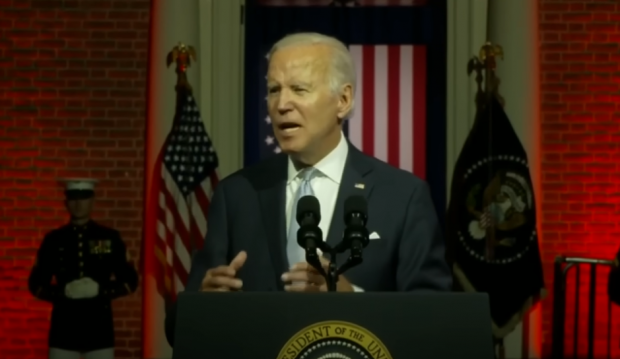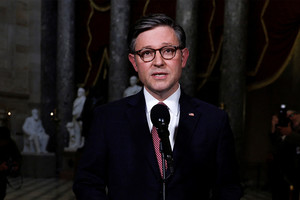When Biden Gives the Wrong Speech

Last Thursday night, Joe Biden went to Philadelphia and delivered two speeches. That was one too many.
The White House advertised Biden’s address to the nation as a warning about the threat faced by our democracy. The implication was that the president would rise above partisanship to talk about the more fundamental danger posed by the deep divisions and hyper-polarization that have done such great damage to our politics and our society.
Biden did give that speech, and there were times when it was extremely effective. He offered praise to people of good will in both parties who could disagree but still respect each other, and contrasted them with those who instead resorted to violence to achieve their political goals. If that was the only speech the president had given, he would have been just fine. He would have reminded voters that they elected him to return the country to some type of normalcy and may have even been able to begin to separate the Bush/Romney traditional conservatives in the Republican party from the Trump-led MAGA faction that have captured control of the GOP in recent years.
That speech would have been a tremendous political success if Biden could have managed to pull it off. But he couldn’t.
Instead of demonstrating the restraint necessary to keep his remarks on a higher plane, Biden and his advisors couldn’t resist the temptation to give a second speech at the same time. Interwoven with that more elevated address was the most predictable partisan polemic that a team of presidential speechwriters could have possibly drafted. The president stepped down from that higher platform and served up the type of stump speech that politicians typically deliver when they are trying to rouse their party’s true believers in the runup to an important election.
There’s nothing wrong with throwing red meat to a baying partisan crowd. Presidents are also party leaders, and chief executives of both parties have routinely hit the stump for their preferred candidates over the years. Biden has every right to campaign to increase the Democratic majorities in Congress and to try to lay the groundwork for his own re-election campaign in the process.
But this speech was supposed to be about something bigger than that. And by mixing in his party’s most advantageous talking points on abortion rights, prescription drug prices and climate change, Biden ended up undermining what was intended to be a clarion call for democracy by suggesting that those Republicans who disagreed with him on those issues were part of the darker menace that he had described elsewhere in the speech.
RELATED: Is Democracy in Peril? Where the Left and Right Agree and Disagree
Before Biden took the stage, it appeared that his key targeted audience would be the “un-Trump” Republicans, both those members of the GOP who had been angered by the former president’s behavior from the beginning and those who had tired of him over the years, especially in the aftermath of the January 6 riots and Trump’s continued insistence that the 2020 election had been stolen from him. Those Republicans and conservative-leaning independents tend to consider themselves as patriots, and they could potentially have been lured by an address that denounced violence, election denialism, and race-based divisiveness, and suggested to them that they could reject Trump’s extremism without abandoning their personal values and political ideology.
Biden wanted to draw a line with patriots of both parties who share his belief in the unique “soul of America” even while disagreeing on some matters of public policy on one side and those trying to undermine American democracy on the other. But by including the partisan talking points in his address, Biden instead drew that line starkly between the two parties and forced many Republicans who are dissatisfied with Trump back into the former president’s camp.
Biden ran for president to try to heal that divide. After more than a year of struggle, he had appeared in recent weeks to forge a bipartisan path on critical issues like manufacturing, veterans’ support, and gun safety. How ironic and unfortunate it would be if he blew up his own bridge-building effort at the precise moment when he was best positioned to move it forward.
Given current political trends, Democrats might actually be able to maintain or even increase their majorities in at least one house of Congress this November. And Biden will have other opportunities over the next two years to try to achieve bipartisan consensus toward his objective of healing a damaged democracy. But last week, he seems to have done that goal more harm than good.
Dan Schnur is a Professor at the University of California – Berkeley, Pepperdine University, and the University of Southern California, where he teaches courses in politics, communications and leadership. Dan is a No Party Preference voter, but previously worked on four presidential and three gubernatorial campaigns, serving as the national Director of Communications for the 2000 presidential campaign of U.S. Senator John McCain and the chief media spokesman for California Governor Pete Wilson. He has a Center bias.
This piece was reviewed and edited by Managing Editor Henry A. Brechter (Center bias).
Read more of Dan’s writing at: www.danschnurpolitics.com.


April 24th, 2024

April 24th, 2024

April 22nd, 2024